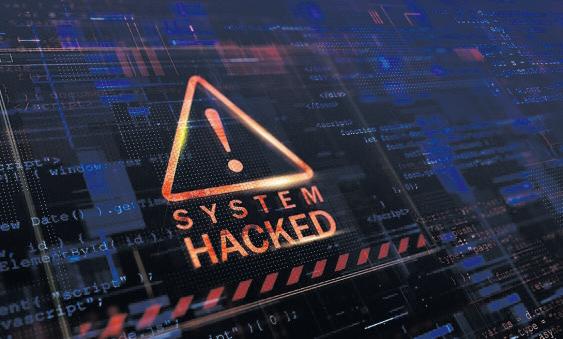
5 minute read
Business
AUSTRALIAN UNEMPLOYMENT DROPS TO 8.1% IN SEPTEMBER AS EMPLOYMENT SOARS TO A RECORD HIGH ABOVE 13.7 MILLION
In September unemployment dropped 1.1% points to 8.1%, according to the latest Roy Morgan employment series data. The fall in unemployment was due to a signifcant increase in employment as both full-time and part-time employment increased.
Unemployment in September decreased 161,000 to 1.2 million Australians (8.1% of the workforce) although underemployment was up 233,000 to 1.56 million (10.5% of the workforce). Overall unemployment and under-employment increased 72,000 to 2.76 million (18.6% of the workforce). • • The workforce was up 57,000 in
September driven by increasing employment: • The workforce in
September was at a record high of 14,907,000 (up 57,000 from August) – comprised of a new record high 13,705,000 employed
Australians (up 218,000) and 1,202,000 unemployed
Australians looking for work (down 161,000). • • Employment up in September driven by increasing fulltime and part-time employment: • Australian employment increased 218,000 to a new record high of 13,705,000 in September.
The increase was driven by a rise in full-time employment, up 197,000 to 8,881,000, and an
increase in parttime employment, up 21,000 to a new record high of 4,824,000. • •
Unemployment plunges in
September as over 200,000 people fnd new jobs: • 1,202,000
Australians were unemployed (8.1% of the workforce) in September, a decline of 161,000 from
August with fewer people looking for full-time work, down 57,000 to 535,000, and fewer people looking for part-time work, down 104,000 to 667,000. • • Underemployment increased in
September to a record high of 1.56 million: • In addition to the unemployed, 1.56 million Australians (10.5% of the workforce) were under-employed – working part-time but looking for more work, up by 233,000 from
August. • In total 2.76 million Australians (18.6% of the workforce) were either unemployed or under-employed in September, up 72,000 on August.
Compared to early March 2020, before the nation-wide lockdown, in September 2022 there were more than 600,000 more Australians either unemployed or under-employed (+3% points) even though overall employment (13,487,000) is over 830,000 higher than it was pre-COVID-19 (12,872,000).
Why cybersecurity continues to be a problem for industry

The recent MyDeal incident is the third major incident affecting Australians. We need the community’s confdence back in our cyber capabilities, say UNSW experts.
In the past three weeks, three cyber attacks resulted in identity leaks that have sent ripples around the nation.
Has the triple-A of cyber security (Authentication, Authorisation and Accounting) failed?
In the recent MyDeal. com.au incident, early reports suggest that a compromised credential, most likely related to elevated users, was used to access a database storing user information. The attack led to the scrambling of 2.2 million customers data, which included email addresses, full names, phone numbers, delivery addresses and some customers’ birthdates.
In an interview with Channel 9 News, Professor Sanjay Jha, Chief Scientist for UNSW Institute for Cybersecurity (IFCYBER), said: “… the breach raises serious concerns for the end user’s confdence in using online services and poses a serious challenge for the industry”.
“Compromised credentials should not provide easy access to malicious actors when multi-factor authentication (MFA) is in place,” he added.
Safely navigating the digital world
Following basic practices on Cyber Security Guidelines listed by the Australian Cyber Security Centre can help a business protect their systems from cyber threats.
Dr Arash Shaghaghi, a Senior Lecturer in Cybersecurity from the UNSW School of Computer Science and Engineering and UNSW Institute for Cybersecurity, says it’s evident from the recent attacks that some industries are not adopting the latest research on cybersecurity fast enough.
“Users’ data is collected by various services without any control from the end user, and often the data collection to join these services is excessive – leaving end users vulnerable and with limited options when a serious breach occurs,” he says.
“Other parts of the world are investing heavily in technological measures such as Selfsovereign identity (SSI), where users would have better control over who has access to what part of user identity and other information.
“SSI gives individuals control over the information they use to prove who they are to websites, services, and applications across the web.
Optus
Last month, 10 million Optus customers experienced a similar fate when cyber criminals hacked into the system, stealing personal details such as passport ID and licence numbers. It was reported the breach suggests that an open port without authentication for testing purposes was left in the production version.
Unfortunately, these problems are wellknown to the industry, says Prof. Jha.
“About fve years ago, we were white boxing early versions of Philip Hue bulbs and Phillip Hue Bridge. We found that you could control these devices through such open ports,” he says.
Prof. Jha is also concerned about the state of risk assessment and authorisation processes across the industry and says further stringent penalties for negligence would go a long way.
Often these processes are a box-ticking exercise in an Excel spreadsheet, and many conducting these tasks don’t have adequate background in cybersecurity, he says.
“This re-emphasises the need for quality education along with more research in quality tools to improve these processes,” says Prof. Jha.
“My team is working on such tools for a Distributed Energy Resource Management Security project at UNSW funded by Cyber Security Cooperative Research Centre.
“Cyber Security is a cat-and-mouse game. Researchers and industry experts need to come together in Australia and work closely to build stronger and more resilient capabilities that help safeguard businesses and users in today’s world of cyber war and cyber terrorism.










